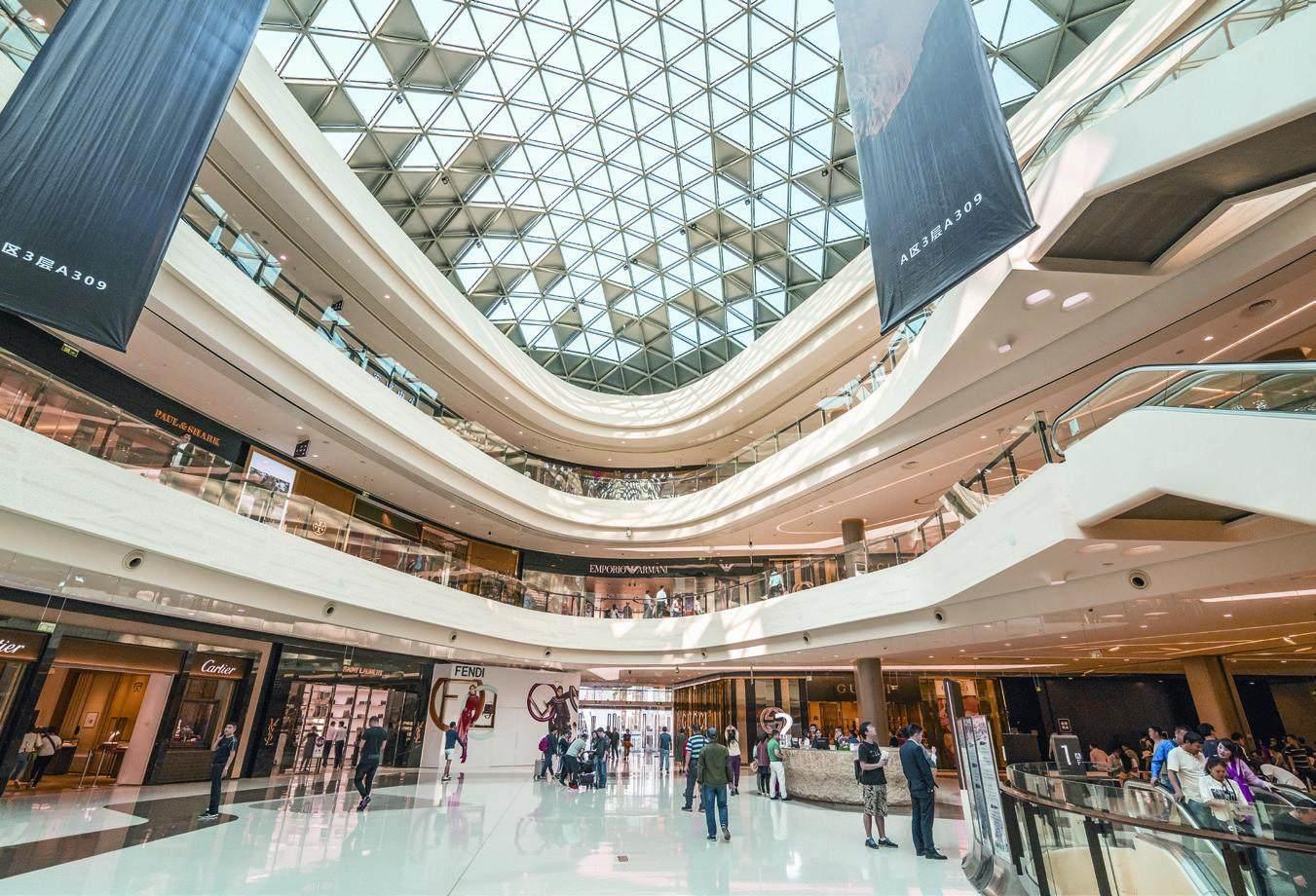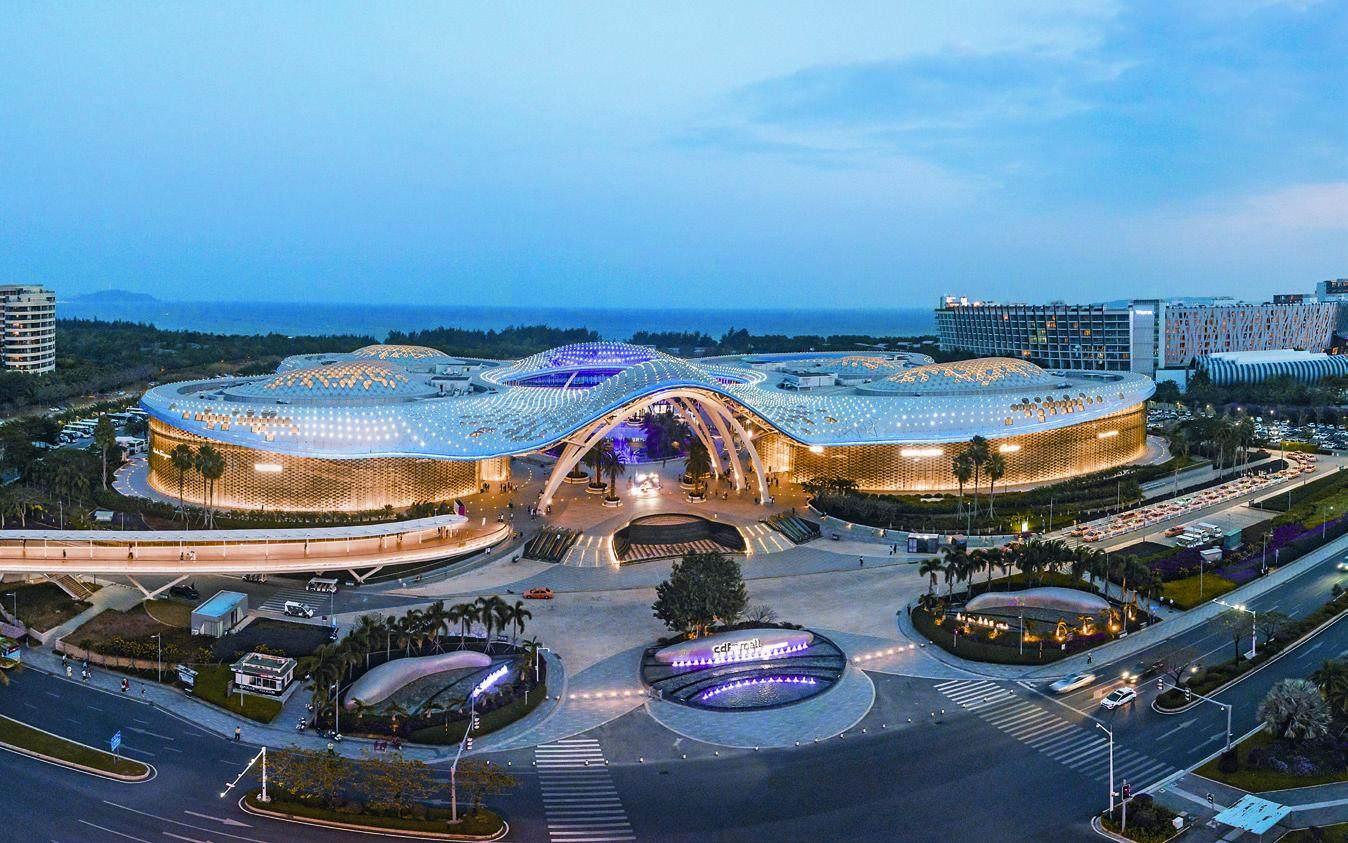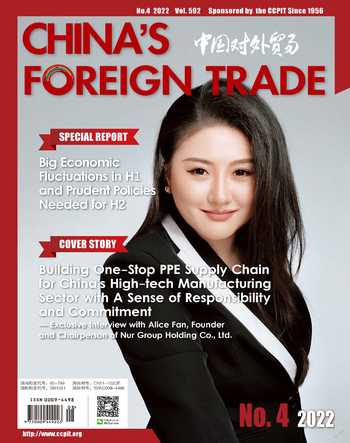Off-shore Duty-free Consumption in Hainan Surges
By Lynn Yu
On June 28, the f irst Hainan International Offshore Duty Free Shopping Festival opened in Sanya International Duty Free Shopping Complex. During the festival that is set to last for six months, Hainan will hold more than 50 marketing campaigns throughout the Province.
While the global tourism consumption industry has been hit hard by the COVID-19 pandemic as a whole, the off-shore duty-free consumption market in Hainan has surged thanks to the effective pandemic prevention and control measures in China and a series of new favorable duty-free policies, which has attracted an obvious return of overseas consumption.
According to the statistics from Haikou Customs, in the two years from July 1, 2020, when Hainan adjusted the off-island duty-free policy, to the end of June this year, Hainan realized a total of RMB 90.6 billion in sales of 125 million off-shore duty-free goods, which was RMB 124 million per day on average, marking an increase of 257% from before the new policy, and receiving 12.28 million shopping visitors. Off-shore duty-free shopping is not only beneficial to tourists, but is also an important engine for tapping into the consumption potential, promote the economic recovery, and stimulate economic development in Hainan Province.
Hainan is expected to construct the worlds largest off-shore duty-free market
At present, there are 5 offshore duty-free business entities in Hainan, and 10 off-shore duty-free stores, meaning an off-shore dutyfree market is becoming establishing in Hainan with diversified market entities and orderly competition. At present, these off-shore duty-free stores mainly provide perfume and cosmetics, jewelry, watches, bags, clothing, electronic products, etc.
In order to promote off-shore duty-free sales to resume growth, the Department of Commerce of Hainan Province issued the Action Plan to Promote Off-shore Duty-Free Sales in 2022 on May 30th, in order to boost offshore duty-free sales through a series of measures including attracting more tourists to Hainan Island, strengthening promotion and marketing, and introducing new products, so as to continuously improve the international competitiveness of off-shore duty-free business and improve the attractiveness to overseas consumers.
Secretary of the Party Committee and executive director of Sanya Duty Free Shop Co., Ltd. of the China Dutyfree Group, Gao Xujiang, said: “The competitive prices of duty-free goods in Hainan and the availability of imported products without needing to leave China are the main reasons contributing to the continuous prosperity of Hainan duty-free stores and the attractiveness thereof to domestic consumers.”
Recently, Hainan issued Several Measures to Support the Rapid Resumption of Growth of Off-shore Duty-free Consumption, in order to help off-shore duty-free business entities carry out marketing activities more actively and effectively and strive to realize an annual sales target of RMB 100 billion.
Liu Feng, Director of the Research Center for Free Trade Ports with Chinese Characteristics at Hainan Normal University, reiterated that it is a unique and significantly favorable national policy to turn Hainan into a free trade port, and the new off-shore duty-free policy in Hainan Province not only effectively boosts domestic demand and promotes the return of overseas consumers, but also stimulates the upgrading of Hainans tourism and modern service industry, and plays an indispensable and important role in accelerating the construction of an international tourism consumption center in Hainan Province.
“These duty-free business entities in Hainan will compete for the high-end consumption market internationally in the future,” said Jiang Xiongbiao, a member of the Party committee and deputy general manager of Hainan Development Holdings. “There is a large domestic market and strong consumption capacity in China, and all duty-free market subjects should join together to develop a domestic duty-free consumption market, making it more competitive and attractive to overseas consumers.”
According to Chi Fulin, President of the China Institute for Reform and Development (CIRD), with stable or more open policies, it is expected that by 2025, the size of the off-shore dutyfree shopping market in Hainan will exceed RMB 160 billion, surpassing the market size of South Korea in 2019, and potentially becoming the worlds largest off-shore duty-free shopping market.
Wang Xuan, Deputy General Manager of the China Tourism Group Duty Free Corporation, explained that this year the company will focus on the expansion of the Sanya International Duty Free Shopping Complex and Sanya Phoenix Airport Duty Free Shop to attract more brands, accelerate the upgrade of Haikou Meilan Airport Duty Free Shop to provide a highquality shopping and consumption experience, and ensure that the project of the Haikou International Duty Free Shopping Complex will start operation smoothly, which will become the largest single duty free store in the world.
Construction projects of dutyfree stores flourish
Sources in the industry believe that there is still potential for current off-shore duty-free policies. Statistics indicate that 40% of global dutyfree products in 2019 were bought by Chinese consumers, and the value of overseas-purchased duty-free goods exceeded RMB 180 billion, triple the sales income (approximately RMB 60 billion) of duty-free stores in Hainan in 2021.
Encouraged by the bright future of off-shore duty-free shopping, governments in various places have put policies in place this year to promote the development of the local duty-free shopping industry.
On April 25th, the General Office of the State Council issued the Guidelines on Further Unleashing the Consumption Potential to Promote the Sustainable Recovery of Consumption, proposing to perfect the policy for duty-free stores in cities and to plan and build a number of duty-free stores with Chinese characteristics in cities. Industry insiders said that the duty-free economy is gaining more attention, and as one of the measures for promoting consumption, duty-free consumption may usher in a new golden period.
In 2022, a government work report by the Guangzhou municipal government proposed to build Guangzhou into an international consumption center, by supporting the development of the tax- and dutyfree economy, and accelerating the construction of a duty-free shopping complex at Guangzhou North Station. As stated in the outline of the 14th Five-Year Plan, Shenzhen plans to explore the development of the urban duty-free industry and the construction of an international duty-free city, in order to spur on the development of the duty-free economy, guide the return of overseas consumption and attract foreign consumption.
Recently, the General Office of Beijing Municipal Peoples Government issued a notice on the Implementation Plan to Build the Airport-based “Dual Hubs” for International Consumption(2021-2025), proposing to construct duty-free stores at ports and increase the number of duty-free stores at airports, in order to attract international consumers back to China, while also encouraging duty-free stores at airports to sell domestic products and help domestic brands explore international markets.
Shanghai has also made it clear that it will vigorously develop the tax-free and duty-free economy by encouraging duty-free stores to set up special zones for domestic products, expanding the scope for refunds immediately after purchase, optimizing the tax refund procedure, increasing the number, type and geographical coverage of tax refund stores, and encouraging tax-free stores to be opened in key business districts, airports, shopping malls, hotels and tourist attractions.
Recently, the Zhuhai Municipal Finance Bureau issued a public reply to the “Proposal for Developing A Dutyfree Economy in Zhuhai”, stating that Hainans off-shore duty-free policies had provided a precedent and experiences that can be learned from. As the policies for the GuangdongMacao In-Depth Cooperation Zone in Hengqin gradually come into effect, under the future regulatory model of“easy access and tight regulation”, it may be an important stimulus to the high-quality development of the dutyfree market in the Hengqin In-Depth Cooperation Zone to effectively raise the consumption amount on dutyfree products for incoming passengers from “second-line” ports, and to stimulate overseas consumption.
Secure the sustainable development of the duty-free industry in the post-pandemic era
Although the duty-free shopping market is flourishing now, experts are not very confident about the future, since Hainan will face direct competition from internationally renowned “shopping paradises” in Europe, the United States, Japan, South Korea, Singapore, Hong Kong and so on. It will be a major challenge for Hainan to continuously attract consumers after the COVID-19 pandemic.
Liu Feng said that by making use of the favorable policies for free trade port and high-grade platforms such as the China International Consumer Products Expo, China should speed up its perfecting of the industry chain and supplementary services for the dutyfree consumption market, and should firstly build Hainan Island into a high-quality “hub” for duty-free goods and resources, as well as a successful model within China, to spur overseas consumption and to attract European investment, in particular from those European enterprises in the industrial chain of luxuries in France, Italy and so on. Meanwhile, Hainan can explore innovative models for duty-free stores, such as stores in the front and factories/storehouse in the rear.
Chi Fulin believes that more competitive and qualified enterprises should be allowed to enter the dutyfree market in Hainan Province, in order to improve the quality of dutyfree shopping services there through fair competition.
“First, there should be an institutional guarantee system for dutyfree shopping, including a quality management system, local regulations focusing on consumer protection and a basic system for service quality management. Second, we should accelerate the construction of a service system for duty-free shopping, work on rules, regulations, management and standards, and form a complete service system. Third, Hainan should cooperate with Hong Kong to develop a larger duty-free market in Hainan Province, jointly construct the industrial chain, supply chain and service chain for dutyfree shopping, and gradually build Hainan into the worlds largest dutyfree shopping center based on the large domestic market,” Chi Fulin suggested.
Recently, the China Duty Free Group (CDFG) re-submitted an application to the Hong Kong Stock Exchange for public offering. It was reported that the company would invest the funds raised in 8 duty-free stores at major airports, 20 more duty-free stores at ports, 20 taxable travel retail projects, in-city duty-free stores, and overseas expansion projects. Specifically, the overseas expansion projects include opening 6 overseas in-city dutyfree stores, increasing the number of overseas port duty-free stores, and the selective acquisition of 2 to 3 overseas travel retailers, etc. Besides this, it also planned to improve supply chain efficiency, upgrade the information technology system, and perfect the membership system, etc.
According to Cui Jian, a member of the Party committee and deputy director-general of Hainan Provincial Department of Commerce, next, Hainan Province will take measures regarding the competitiveness of Hainan in terms of international offshore duty-free markets: the first is to improve the capacity of the dutyfree shopping market, and the layout of duty-free stores while accelerating the introduction of high-grade bestselling products and high-quality domestic goods and brands, to better meet domestic consumer demands; second is to build a first-class duty-free shopping environment, upgrade store facilities, strengthen the training and introduction of service and management talents, and comprehensively improve the level of industry management services such as sales, delivery and after-sale service; third is to enhance the service capacity of the industry, form the Hainan duty free association, intensify horizontal cooperation among business entities, synchronize Hainan duty-free market with global market in terms of brands, varieties and prices, and promote the healthy development of the duty-free industry.
- China’s foreign Trade的其它文章
- Zero Tolerance for Bad Faith Trademarks By Chinese Authorities
- Focus on Seven Aspects of the Amendments to the Anti-Monopoly Law
- New Infrastructure Construction Promotes the Stable Growth of the Chinese Economy
- China’s Automobile Exports Catch Up from Behind
- The Logistics Industry Turns Positive
- Export of Cases and Bags Increases Robustly

